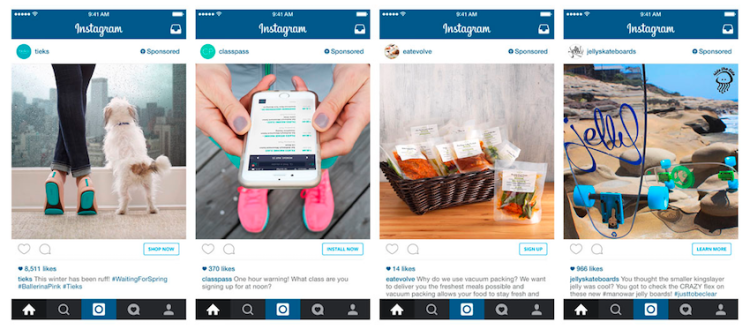Adam Padilla is an ad man. And he thinks Instagram could be killing its golden goose by going big with ads and shopping.
Padilla, creative director of his Brandfire agency, told me that he’s an avid Instagram user with over 17,000 followers for his illustrations. On the service, he said, he doesn’t “want to feel like I’m shopping,” when what he’s after are people’s comments.
Instagram has had a few select ads since the fall of 2013, but last week it announced any brand, large or small, will soon be able to place ads on its feed. Additionally, advertisers will be able to target any of its 300 million users by the data they have provided — an unsurprising move, given the vast user targeting perfected by Instagram’s parent, Facebook.
The service is also trying out a Shop Now button on images that will enable a user to directly purchase the product shown or install a related app. Purchases now often require an awkward cutting and pasting of a link, or a visit to the retailer’s site, neither of which are user-friendly interactions on a smartphone. There are also Instagram-related shopping services.
One investment firm, RBC Capital Markets, has predicted that the new Instagram ad service could generate as much as $2.1 billion.
Padilla emphatically described these moves as “risky” and “a mistake.”
We recently published Mobile marketing automation: How apps drive massive engagement & monetization
$499 on VB Insight, or free with your martech subscription
He added that he’s never seen an image of a Nike shoe by itself on Instagram, although people might share a photo of basketball star LeBron James wearing one. Adding a Shop Now button, he said, will change the experience of that image.
When I asked how he, as an ad and marketing guy, might want to see Instagram generate brand-related income, Padilla suggested influencer marketing like a photo of Kourtney Kardashian “holding up a protein shake,” with purchasing taking place in another, connected online storefront.
“If I’m Instagram,” he suggested, “make a parallel Instagram where it’s all shopping.” He pointed to Spring as an Instagram-like shopping service.
Founder Kevin Systrom has described Instagram’s key values as creativity and community. Facebook, when it purchased the service in 2012, promised not to tamper with the winning formula.
Visually oriented social networks have a special resonance for many users. Pinterest also announced last week that it will let users add buy buttons to images.
But Padilla said Pinterest was not as personal an experience as Instagram and was similar to a marketplace, “like Etsy.”
“Instagram is a feed, more curated,” he said.
Of course, not all marketers agree with Padilla. Ben Hordell, a partner at digital ad and marketing agency DXagency, told me that the mockups of the Shop Now button look like Instagram is doing it “in an elegant way and not being intrusive about it.”
And the ads, he said, can become “like pieces of content.”
“There are going to be purists that may flee from this,” he said, “because they don’t want any advertising in this space.”
But Pinterest and Instagram are “personal catalogs,” Hordell said, and these efforts — as long as they keep “the brand spam down” — are “making these catalogs shoppable.”
They’re “all about images, [and] images make you want the product.”
VentureBeat's mission is to be a digital town square for technical decision-makers to gain knowledge about transformative enterprise technology and transact. Learn More


